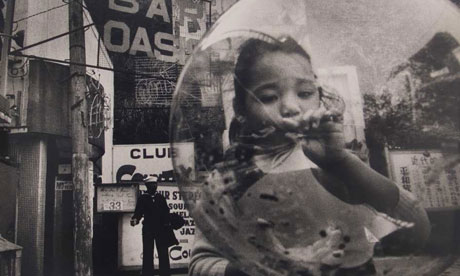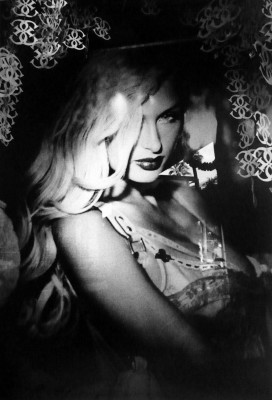The Michael Hoppen Gallery in London
presents an exhibiton on the works of:
09.09.10 - 09.10.10

10.09.10 - 10.10.10

Article from the Guardian: Shomei Tomatsu: the man who changed Japanese Photography for Ever.
From The Michael Hoppen Gallery
Website
Shomei Tomatsu & Daido
Moriyama
The
work of Daido Moryiama and Shomei Tomatsu, the two giants of the Japanese
post-war movement presented side by side for the first time in the UK,
will be unveiled at the Michael Hoppen Gallery in September. While their
photographs differ in style, sentiment is common to both. They address love,
anguish and anger with equal power, passion and subtlety.
Despite
being relatively unknown outside his home country, seventy-seven year oldShomei
Tomatsu is widely considered the most important figure in
Japanese post-war photography. Combining a unique visual style with personal
insight, his work spans a period of more than 50 years, examining the island
nation since World War II with quiet brilliance and an uncompromising look
on a complex, nuanced subject. His major American retrospective in 2006, Skin
of a Nation, was hailed as one of the most important shows of Japanese photography
to have been staged in the United States of America.
Cinematic
in scope and presentation, Tomatsu's first UK exhibition will provide a candid
look at the effects of the atomic bombing of Nagasaki, the impact of the
Japanese post-1960s economic boom and the continuing influence of American
military and popular culture in Okinawa. This exhibition provides a unique
opportunity as Tomatsu's work is rarely available or exhibited, though his
artistic longevity as a photographer and the esteem of his peers is a
tribute to his vast talent.
Complicated
and disconcerting, Daido Moriyama's raw and visceral work reflects
the disruption wreaked by the American World War II occupation and the
profound social shifts accelerated by industrialization and urbanization.
Examining the collision of a traditionally insular culture and freewheeling
capitalism, Moriyama's images are timeless portrayals of the unsettling
limbo thrown up by the clash between the old and the new.
In his
early work, Moriyama used grainy textures and chiaroscuro, suggesting an
insidious, edgy feeling of isolation with dark, mysterious backgrounds
pierced by harsh spotlighting. However since the 1980's, his vision has
become lighter, fresher and larger. This new clarity - perhaps reflecting the
security of a maturing artist -
nonetheless
retains the perceptive intellect and compositional power evident throughout his
career.
Taking
a retrospective look at his oeuvre, the exhibition features vintage works from
these earlier periods as well as photographs taken during Moriyama's multiple
visits to Hawaii in 2007 and 2008. Exhibited in 2009 at
the
Metropolitan Museum of Photography in Tokyo, these large prints are unique
editions of one. A group of these prints will form part of the exhibition,
giving collectors and scholars an opportunity to compare and confront the
two masters of Japan's fascinating and complex post-World War II regeneration.
